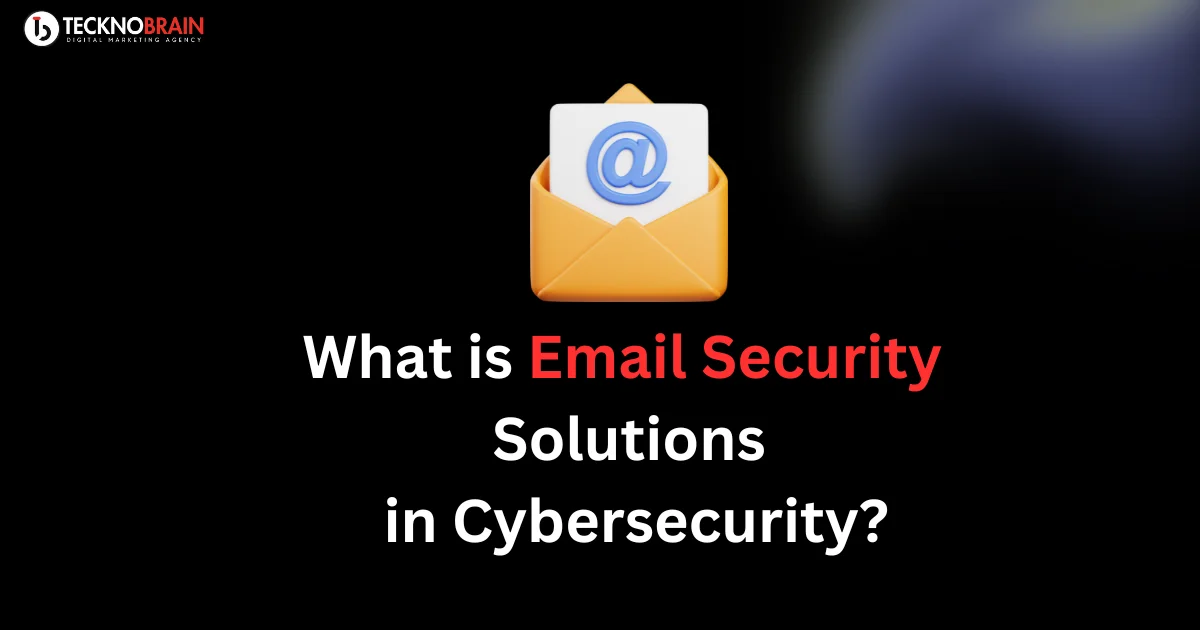Discover “What is Email Security Solutions in Cybersecurity” and how these essential tools protect your organization from phishing, malware, and data breaches. Learn about advanced email security measures and best practices to safeguard sensitive information.
In the digital age, email remains a vital communication tool for businesses and individuals alike. However, it also represents a significant vulnerability in the cybersecurity landscape. Cyber threats targeting emails are increasingly sophisticated, ranging from phishing attacks to malware distribution. This necessitates robust email security solutions that can protect sensitive information and maintain the integrity of communication channels. In this comprehensive article, we explore the critical components, technologies, and best practices involved in securing emails against potential threats.
Table of Contents
Understanding Email Security
Email security encompasses the various strategies, technologies, and policies implemented to safeguard email communication. It aims to protect email accounts, content, and communication against unauthorized access, loss, or compromise. Effective email security is not merely about preventing spam but involves a multi-layered approach to counteract diverse threats. These include phishing, spam, malware, and data breaches.
Key Components of Email Security Solutions
1. Anti-Phishing Technologies
Phishing attacks are among the most common email-based threats. Cybercriminals use deceptive emails to trick recipients into revealing sensitive information or downloading malicious software. Anti-phishing technologies play a critical role in identifying and blocking these malicious attempts. Key features include:
- Domain Authentication: This verifies that an email’s sender domain matches the domain it claims to be from, reducing the risk of domain spoofing.
- Content Analysis: This involves analyzing email content for suspicious language or patterns that indicate phishing attempts.
- User Education: Educating users about recognizing phishing emails and the importance of not clicking on suspicious links is crucial.
2. Spam Filters
Spam filters are designed to detect and block unwanted or unsolicited emails. These filters use a variety of techniques, including:
- Blacklisting and Whitelisting: Maintaining lists of known spam sources (blacklists) and trusted senders (whitelists).
- Content Filtering: Analyzing the content of emails for spam-like characteristics, such as excessive links or certain keywords.
- Machine Learning Algorithms: Leveraging machine learning to adapt and improve the accuracy of spam detection over time.
3. Malware Protection
Emails are a common vector for distributing malware, including viruses, ransomware, and spyware. Comprehensive email security solutions incorporate malware protection mechanisms to prevent the execution and spread of malicious software. Key aspects include:
- Attachment Scanning: Scanning email attachments for malware before they are opened by the recipient.
- URL Analysis: Analyzing links within emails to identify potentially malicious websites.
- Sandboxing: Isolating and testing email attachments in a secure environment before they reach the user’s inbox.
4. Encryption
Encryption is a vital component of email security, ensuring that email content remains confidential and is only accessible to intended recipients. There are two main types of encryption used in email security:
- Transport Layer Security (TLS): This protocol encrypts the communication channel between email servers, preventing interception during transit.
- End-to-End Encryption: This provides a higher level of security by encrypting the email content itself, so only the sender and receiver can decrypt and read it.
5. Data Loss Prevention (DLP)
Data Loss Prevention (DLP) technologies help prevent the accidental or intentional sharing of sensitive information through email. DLP systems monitor email content for sensitive data, such as credit card numbers or personal identification information, and can block or encrypt emails that contain such data. This is crucial for organizations that handle large volumes of sensitive information and must comply with regulations like GDPR or HIPAA.
Best Practices for Implementing Email Security
1. Regular Software Updates
Keeping email security software and systems up-to-date is essential for defending against the latest threats. Cybercriminals constantly evolve their tactics, and outdated systems can be vulnerable to new exploits.
2. Employee Training
Employees are often the first line of defense against email-based threats. Regular training sessions can help them recognize and respond appropriately to suspicious emails. This includes training on identifying phishing attempts, handling attachments safely, and reporting suspicious activities.
3. Multi-Factor Authentication (MFA)
Implementing Multi-Factor Authentication (MFA) adds an extra layer of security to email accounts. By requiring multiple forms of verification (e.g., a password and a code sent to a mobile device), MFA makes it significantly more difficult for unauthorized users to gain access.
4. Implementing Strong Password Policies
Encouraging the use of strong, unique passwords for email accounts is a fundamental security measure. Password policies should enforce the use of a mix of characters, and regular password changes, and discourage the reuse of passwords across different accounts.
5. Monitoring and Incident Response
Continuous monitoring of email systems for unusual activities or breaches is critical. Organizations should have an incident response plan in place to quickly address any security incidents, minimize damage, and restore normal operations.
The Future of Email Security
As cyber threats continue to evolve, so too must email security solutions. Emerging technologies such as Artificial Intelligence (AI) and Machine Learning (ML) are being integrated into email security to enhance threat detection and response capabilities. These technologies can analyze vast amounts of data to identify patterns and anomalies that may indicate malicious activities.
Moreover, the rise of cloud-based email services introduces new challenges and opportunities. Cloud providers offer robust security measures, but organizations must still ensure proper configurations and policies to protect their data.
Conclusion
In an increasingly digital world, the importance of comprehensive email security solutions cannot be overstated. From protecting against phishing attacks to preventing data breaches, a multi-layered approach to email security is essential for safeguarding sensitive information and maintaining trust in digital communication. Organizations must stay vigilant, continually updating their security measures and educating their workforce to defend against evolving threats.


